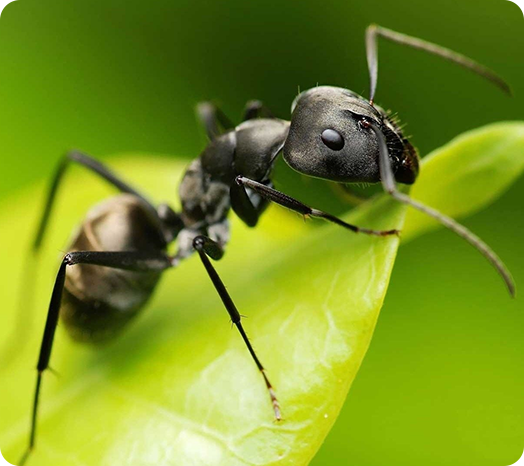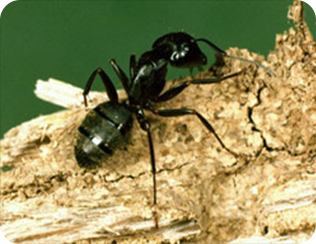Ants
Although ants live in colonies outside, they find their way into your home to forage for food. Several ant species are looking for sugary foods and water to take back to their colony.
At Eric The Bug Guy, our trained technicians can identify the ant you are dealing with. By understanding the behavior of that specific ant, we can determine the proper treatment plan. Most treatment plans are performed around the perimeter of the home or building. However, in some cases, treatment of the interior may be necessary. Contact one of our trained technicians for more information.


ARGENTINE ANTS
CARPENTER ANTS
Carpenter ants are found in moist environments such as rotting or damp wood, hollow doors, windowsills, and facia boards. They leave sawdust-like debris after penetrating a wood surface. Carpenter ants can sometimes be confused for termites. Although carpenter ants do not eat wood like termites, they do hollow out wood to nest, which can cause considerable damage. Carpenter ants do not sting. They do bite, which can be painful because they can spray formic acid into the wound, which could cause a burning sensation, and in some cases, may even break the skin. Carpenter ants are 1/4″ to 1/2″ long and are black colored, but sometimes are bi-colored black and red.

Odorous House Ants
Odorous house ants have colonies ranging in size anywhere from a few hundred ants to tens of thousands, with multiple queens. Odorous ants are known for the rotten coconut-like odor they produce when they are crushed. Odorous ants used to be quite common in Southern California. However, since the Argentine ants have taken over many ant species, they are not commonly found. They do not sting, and they invade houses primarily during the winter, searching for food. Odorous house ants are about 1/8″ long and are dark brown to shiny black colored.



can treat your home or office’s current ant problem and help prevent future ant invasions.
